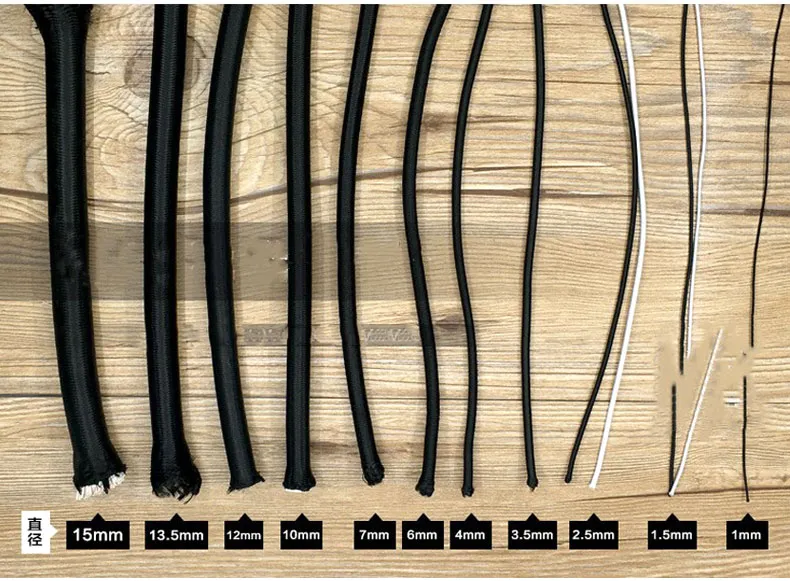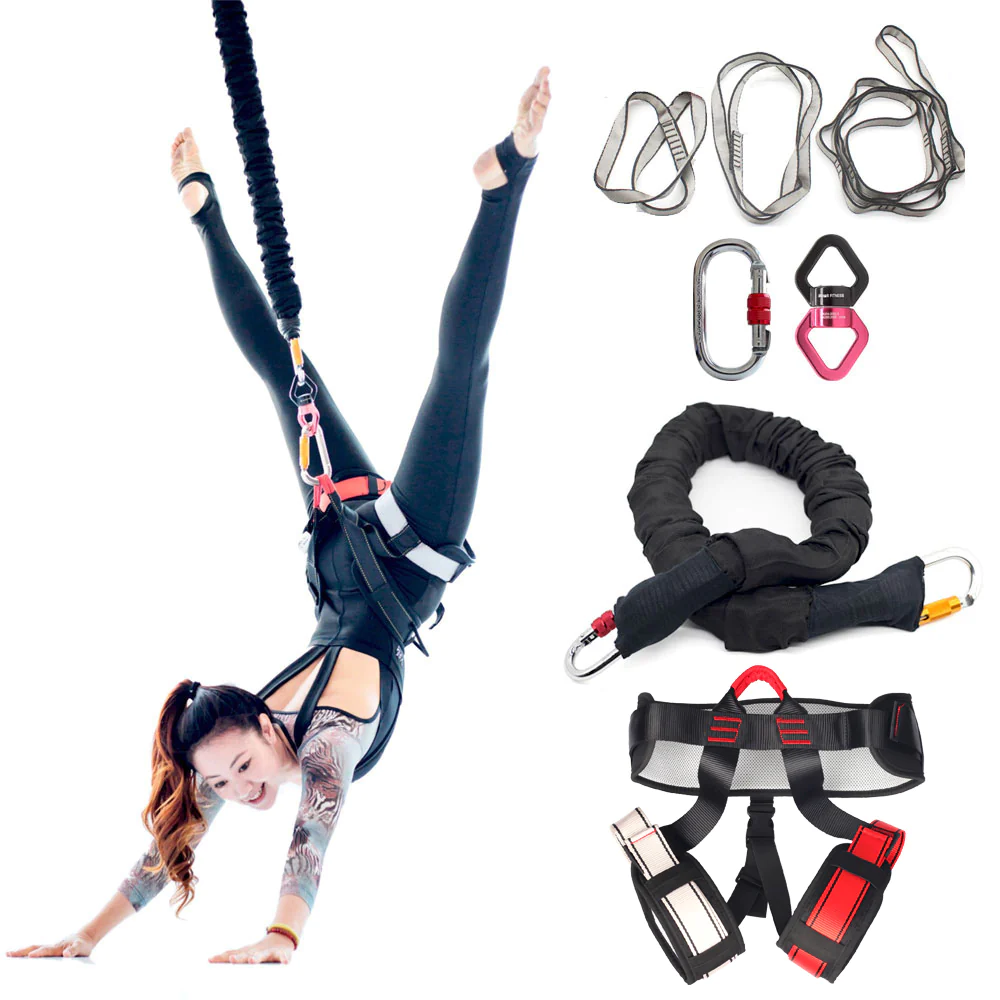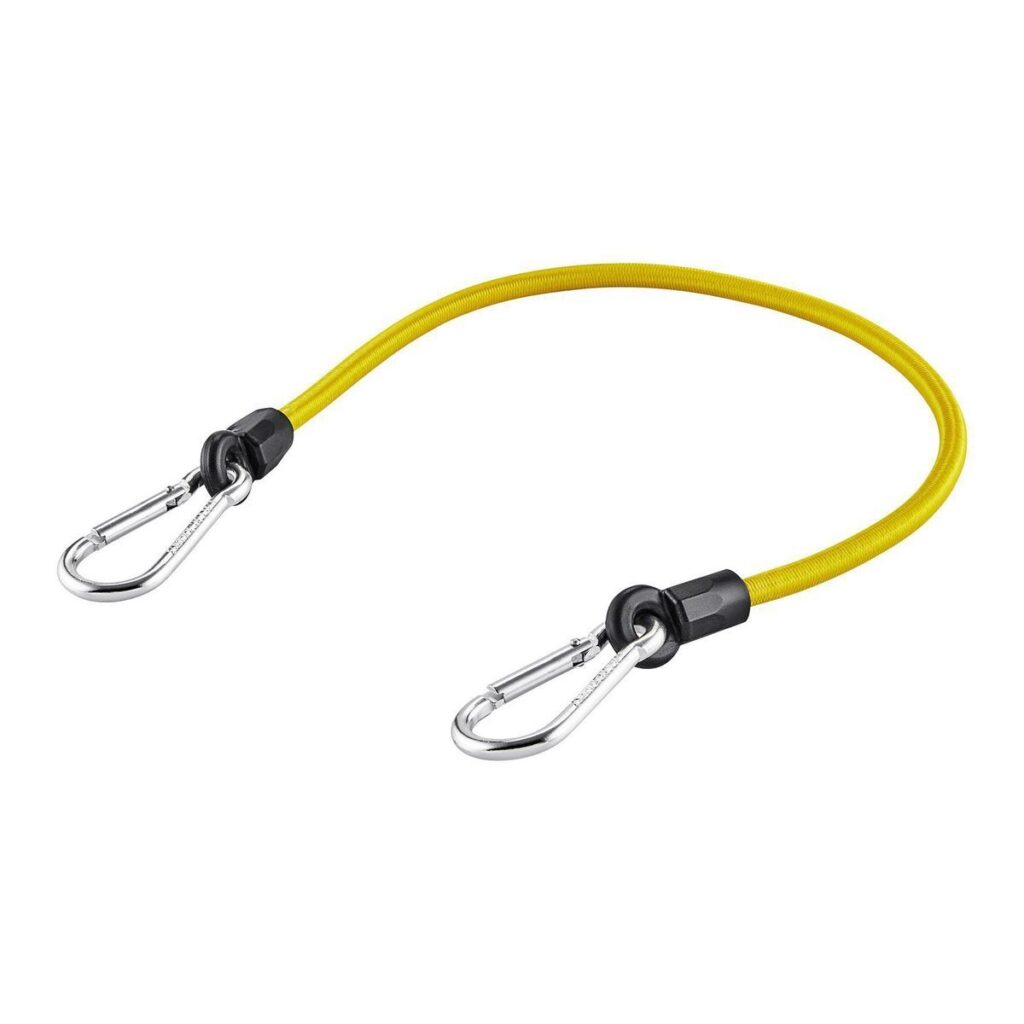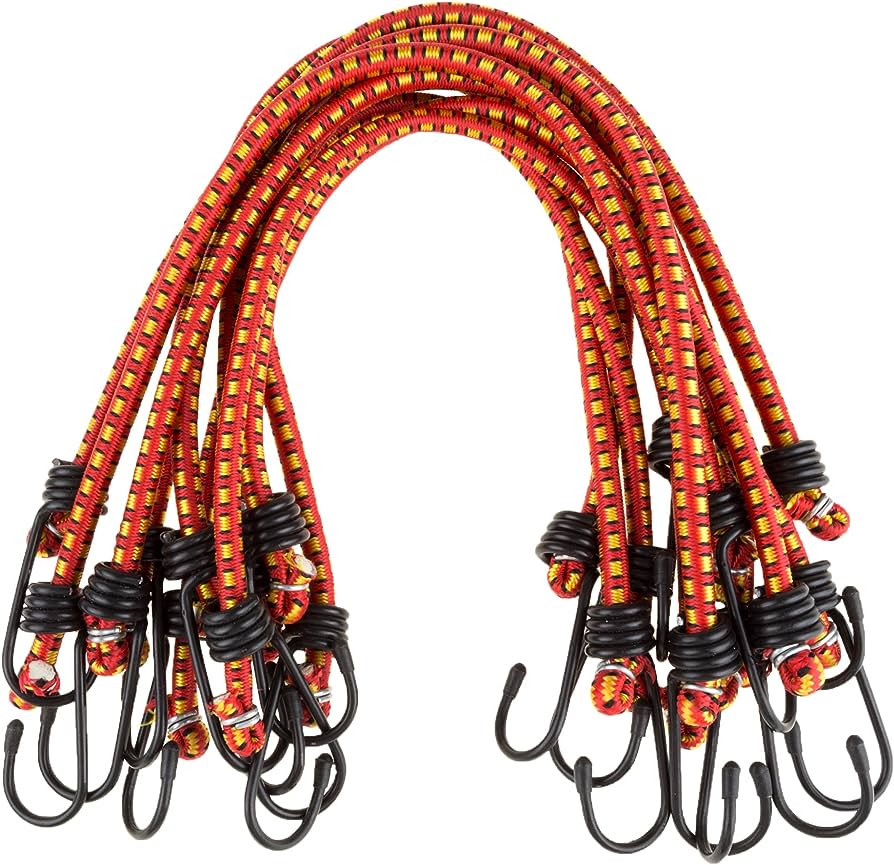Looking for the right bungee cord size? Whether you’re securing cargo on your roof rack, adding resistance to your workout, or simply organizing your gear, choosing the right length and diameter is crucial. In this guide, we’ll break down the basics of bungee cord sizes and measurements, so you can select the ideal cord for your needs. From selecting the perfect length to considering the diameter and more, we’ve got you covered. So, if you’re asking yourself, “What size bungee cord do I need?” read on to find out!
Understanding Bungee Cord Sizes and Measurements: Going Beyond the Basics
As mentioned earlier, bungee cords are incredibly versatile and durable equipment suitable for various projects. Their stretchiness, however, can make it challenging to determine the perfect size bungee cord for different uses. We’ve already established that bungee cord sizes are measured in length and diameter, with different sizes having different break strengths. Now, let’s delve deeper into understanding how these measurements affect the performance and applications of bungee cords, helping you make an informed decision for your specific needs.

Bungee cord sizes
First and foremost, it’s essential to understand that bungee cords are made from elastic materials, such as latex or rubber, which allow them to stretch and return to their original shape. This elasticity is what makes them so useful in various applications, from securing loads to providing resistance in exercise regimens. However, this also means that the cord’s performance, durability, and safety are heavily influenced by its length and diameter.
The Role of Length in Bungee Cord Performance
When it comes to length, the general rule of thumb is that longer cords provide more stretch and flexibility, while shorter cords offer greater tension and stability. For instance, if you’re using a bungee cord to secure a load on a roof rack, you might opt for a longer cord to accommodate the load’s size and shape. On the other hand, if you’re using a bungee cord for a fitness routine, a shorter cord may provide the necessary resistance and stability for your workout.
Understanding the Impact of Diameter on Bungee Cord Strength
The diameter of a bungee cord plays a crucial role in determining its break strength and overall durability. Thicker cords, with larger diameters, can typically handle heavier loads and provide more resistance. Conversely, thinner cords with smaller diameters are more suitable for lighter loads and less demanding applications.
It’s also worth noting that the material composition of a bungee cord can impact its performance and durability. For example, cords made from high-quality latex or rubber tend to be more elastic and resilient than those made from inferior materials. So, when selecting a bungee cord, it’s essential to consider both its size and material quality to ensure optimal performance and longevity.
Read all about: Bounce Your Way to Success: A Comprehensive Guide on How to Become a Bungee Fitness Instructor
In conclusion, understanding bungee cord sizes and measurements is vital for selecting the best cord for your specific needs. By taking into account the length and diameter, as well as the material quality, you can ensure that your chosen bungee cord will provide the necessary tension, stability, and durability for your project or workout routine.
Choosing the Ideal Bungee Cord Length: Factors to Consider
When selecting the perfect bungee cord length for your project, it’s essential to take into account several factors that will influence the cord’s performance and longevity. Considering the purpose, stretch, and safety requirements will help you make the best choice for your specific needs.
1. Purpose of the Bungee Cord
First and foremost, consider the primary use of the bungee cord. Are you using it for outdoor activities such as camping, hiking, or securing items in transit? Or, are you incorporating it into a home improvement project or exercise routine? Identifying the primary purpose will help you determine the ideal length and avoid potential issues related to overstretching or insufficient tension.
2. Stretch Ratio
Bungee cords come with different stretch ratios, which refers to the percentage of elongation compared to the cord’s original length. A higher stretch ratio indicates a more flexible cord, while a lower ratio means a stiffer cord. Depending on your project requirements, you may need a bungee cord with more or less stretch. Keep in mind that the ideal length should be slightly shorter than the distance it needs to span to ensure proper tension and prevent breakage.
3. Safety Requirements

Bungee jumping equipment
When choosing a bungee cord, it’s crucial to prioritize safety. Select a cord with a suitable break strength to prevent accidents or damage to your belongings. Additionally, consider the potential hazards of using a bungee cord that is too long or too short. A cord that is too short may snap under tension, causing injury or damage, while a cord that is too long may not provide enough tension, leading to unsecured loads or loose attachments.
Read all about: Jumpstart Your Fitness Routine: A Complete Guide on How to Set Up Bungee Fitness at Home
4. Customization Options
If you have unique length requirements, consider customizing your bungee cord. Many manufacturers offer custom orders, allowing you to choose the exact length, diameter, and material composition that best suits your needs. This option ensures a perfect fit and optimal performance for your specific project.
5. Adjustability
Finally, consider investing in adjustable bungee cords. These cords come with built-in mechanisms that allow you to adjust the length as needed, providing versatility and convenience for various applications. Adjustable bungee cords can be an excellent option for those who frequently use cords for different purposes and require flexibility in length and tension.
In conclusion, selecting the ideal bungee cord length involves considering the purpose, stretch ratio, safety requirements, customization options, and adjustability. By taking these factors into account, you can ensure that your chosen bungee cord will provide optimal performance, safety, and longevity for your specific needs.
Factors to Consider When Choosing Bungee Cord Diameter
When selecting the perfect bungee cord diameter for your needs, it’s essential to take into account several factors that can influence the cord’s performance and longevity. These factors include the load capacity, environmental conditions, and the type of application.
Load Capacity and Application
Understanding the weight and size of the objects you plan to secure is crucial in determining the appropriate bungee cord diameter. For instance, a 2mm cord is ideal for light tasks like storing garden tools, while a 12mm cord may be necessary for heavy-duty applications such as securing cargo on a truck. Remember to consider the required tension and stretch, as a thicker cord will provide a stronger break strength and better support for heavier loads.
Environmental Conditions

Bungee jumping during great weather conditions
The environment in which the bungee cord will be used plays a significant role in determining the ideal diameter. Thicker cords are more resistant to harsh weather conditions, such as extreme heat, cold, or prolonged exposure to sunlight. If your project involves outdoor activities or securing loads in challenging environments, investing in a thicker cord will ensure better performance and durability.
Type of Application
The specific application of the bungee cord also influences the diameter selection. For instance, thinner cords may be suitable for securing extra items to backpacks, but they may require multiple wraps for added security. On the other hand, bungee ties or luggage elastics may be a better option for small backpacks or bags. Assess the specific needs of your project to determine the most suitable diameter for optimal performance.
Customization and Adjustability
Customizing bungee cords or investing in adjustable cords allows for greater versatility and convenience. Adjustable cords enable you to modify the length and tension according to your requirements, making them a practical solution for various applications. Customized cords also provide the opportunity to select the ideal diameter to ensure optimal performance and reliability in different situations.
In conclusion, selecting the perfect bungee cord diameter requires careful consideration of the load capacity, environmental conditions, and the type of application. By taking these factors into account, you can ensure that your chosen bungee cord will provide the best performance and durability for your specific needs.
Maximizing Roof Rack Security with Bungee Cords and Straps
When it comes to securing your belongings on a roof rack, choosing the right bungee cord or strap is essential. Not only does it ensure the safety of your cargo, but it also helps prevent potential damage to your vehicle and other road users. Here, we delve deeper into the factors that contribute to optimal roof rack security using bungee cords and straps.
Material and Quality

Yellow bungee cord
It’s important to select bungee cords or straps made from high-quality materials that can withstand the test of time, as well as various weather conditions. Look for products made from durable materials like rubber, latex, or polyester, which offer excellent resistance to UV rays, water, and abrasion. Additionally, ensure that the hooks or fasteners are sturdy and rust-resistant.
Securing Techniques
Properly securing your cargo using bungee cords or straps is crucial to avoid any mishaps during transport. Start by positioning your items evenly on the roof rack to maintain balance. Next, use a crisscross pattern when attaching the cords or straps, as this provides better stability and prevents the load from shifting. Make sure to fasten the hooks or fasteners securely to the roof rack and avoid overstretching the cords, which could lead to breakage.
Regular Inspection and Maintenance
Regularly inspect your bungee cords or straps for any signs of wear and tear, such as fraying, cuts, or cracks. Replace them immediately if you notice any damage, as compromised cords may fail to secure your cargo effectively. Additionally, clean your cords or straps after each use to remove dirt and debris, which could affect their performance and longevity.
Complementing with Additional Accessories
For added security, consider using other roof rack accessories alongside bungee cords or straps. Cargo nets, for example, can provide an extra layer of protection by covering your entire load, preventing smaller items from slipping through the gaps. Tie-down straps with ratchet mechanisms offer a higher level of tension and are ideal for securing heavier loads.
In conclusion, understanding the factors that contribute to roof rack security is essential when selecting the right bungee cord or strap for your needs. By considering the material, quality, securing techniques, regular inspection, and complementary accessories, you can ensure that your cargo remains safe and secure during transport.
Bungee Fitness: Expanding Your Exercise Horizons with Bungee Cords

Bungee cord
Bungee fitness has gained popularity in recent years, offering a unique and engaging way to improve overall strength, flexibility, and cardiovascular health. By incorporating bungee cords into various exercises, you can create dynamic and challenging workouts that are both fun and effective. In addition to bungee running, there are several other bungee-based exercises that can be incorporated into your fitness routine, such as bungee-assisted squats, lunges, and planks.
When selecting a bungee cord for fitness purposes, it’s essential to consider the resistance level required for your chosen exercises. Resistance levels can vary depending on the cord’s thickness and elasticity. A thicker cord with less stretch will provide more resistance, making it suitable for strength training exercises. On the other hand, a thinner cord with more stretch is ideal for activities that require greater flexibility and range of motion, such as bungee-assisted yoga.
Another factor to consider when choosing a bungee cord for fitness is the attachment mechanism. Some bungee cords come with carabiners or hooks, while others have loops at each end. Ensure that the attachment method is compatible with your exercise equipment and can securely anchor the cord during your workout.
Pro tip: When incorporating bungee cords into your exercise regimen, start with a lower resistance level and gradually increase it as you become more comfortable and proficient in the movements. This approach will help prevent injuries and ensure that you are progressively challenging your muscles.
For those interested in group fitness classes, many gyms and fitness studios now offer bungee fitness classes. These classes typically provide all necessary equipment, including the bungee cords, harnesses, and anchors. Participating in a group class can be an excellent way to learn proper techniques and receive guidance from a certified instructor.
Lastly, it’s crucial to prioritize safety when using bungee cords for exercise. Regularly inspect your cords for signs of wear and tear, such as fraying or damaged hardware. Replace any cords that show signs of damage to avoid potential accidents or injuries during your workout.
In summary, incorporating bungee cords into your exercise routine can add variety and challenge to your workouts, leading to improved strength, flexibility, and overall fitness. By carefully selecting the appropriate cord size, resistance level, and attachment method, you can safely and effectively harness the benefits of bungee fitness.
What to Consider When Buying Bungee Cords
When shopping for bungee cords, it’s crucial to take into account a variety of factors to ensure you get the most suitable cord for your needs. Apart from the length and stretching capacity, which were discussed in previous sections, there are other essential aspects to consider, such as the type of hook, UV resistance, and safety features.
Type of Hook
Different hooks provide varying levels of security and ease of use. Some common hook types include J-hooks, S-hooks, and carabiner hooks. J-hooks offer a secure connection, while S-hooks are easy to attach and remove. Carabiner hooks provide a more robust and reliable attachment, especially for heavy loads. Consider the type of hook that best suits your specific application and load requirements.
UV Resistance
If you plan on using your bungee cords outdoors, especially in direct sunlight, it’s essential to choose cords with UV resistance. UV-resistant cords are made from materials that can withstand exposure to sunlight without losing their elasticity or strength. This feature is particularly crucial for applications such as securing tarps, canopies, or outdoor equipment, where the cords will be exposed to the sun for extended periods.
Safety Features
When using bungee cords, safety should always be a priority. Look for cords with features like coated hooks, which can prevent scratches and damage to your cargo or equipment. Additionally, some cords come with a safety flag or reflective material, making them more visible and reducing the risk of accidents
Additional Accessories
Depending on your specific needs, you may also want to invest in accessories like bungee cord organizers or adjustable bungee cords. Organizers can help keep your cords tidy and easily accessible, while adjustable cords offer increased versatility for various applications. For more similar posts like this visit our blog and check out Get Back on Your Feet: How to Safely Return to the Platform After Bungee Jumping and Jumping into the Facts: Bungee Jumping Weight Limits and Safety Precautions.
In summary, when purchasing bungee cords, it’s essential to consider factors such as the type of hook, UV resistance, safety features, and additional accessories. By keeping these aspects in mind, you can make an informed decision and select the best bungee cords for your needs, ensuring their efficiency, longevity, and safety in various projects and activities.
FAQ & Fans Questions
Length and diameter are the two main factors to consider when choosing the right size bungee cord. Length should be slightly shorter than the distance it needs to span, while thicker cords are necessary for supporting heavier weight.
The ideal length of a bungee cord is slightly shorter than the distance it needs to span. Custom orders can be made for specific length requirements.
Bungee cords range in diameter from 2mm to 12mm, with thicker cords suitable for supporting heavier weight.
Bungee ties or luggage elastics are suitable for attaching small items to backpacks, but may need multiple wraps if the cord is thin. These are more suitable for small backpacks.
A thick bungee cord that’s around 5 to 10 meters long is recommended for bungee running.
Safety precautions include wearing safety glasses and ensuring the cords are not overstretched or overloaded to avoid snapping or insufficient tension.

